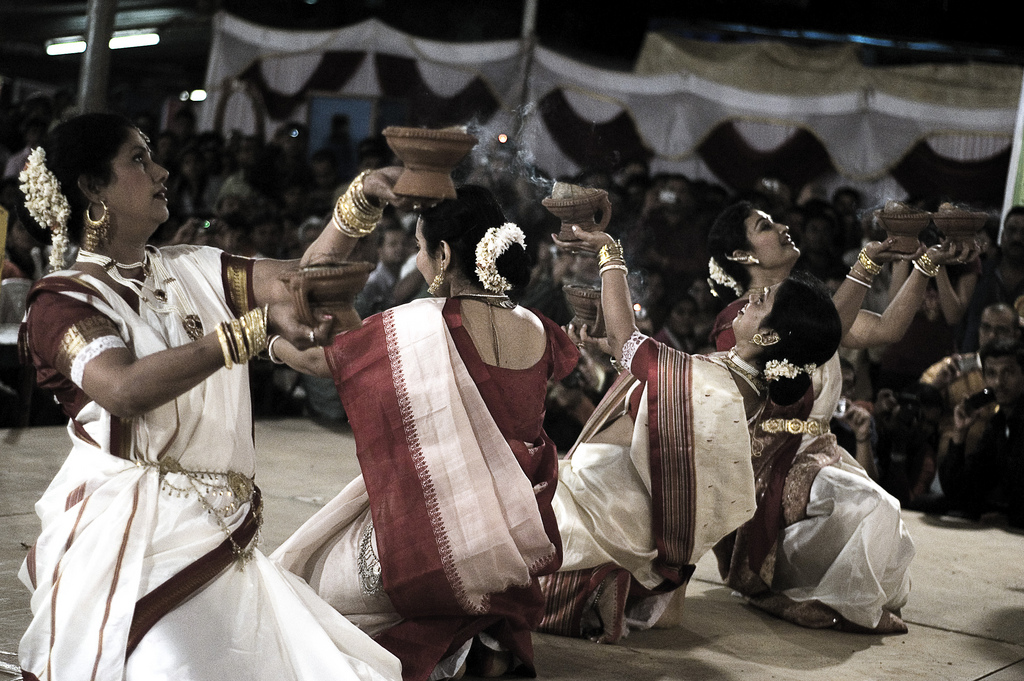Gajra on:
[Wikipedia]
[Google]
[Amazon]

 A Gajra is a flower garland that is worn by dharmic women across the world during festive occasions, weddings, or as part of everyday traditional attire. They are made usually of varies types of
A Gajra is a flower garland that is worn by dharmic women across the world during festive occasions, weddings, or as part of everyday traditional attire. They are made usually of varies types of
File:Ajanta Paintings.jpg, Historically, jasmine gajra has been worn around hair bun,

 A Gajra is a flower garland that is worn by dharmic women across the world during festive occasions, weddings, or as part of everyday traditional attire. They are made usually of varies types of
A Gajra is a flower garland that is worn by dharmic women across the world during festive occasions, weddings, or as part of everyday traditional attire. They are made usually of varies types of jasmine
Jasmine ( taxonomic name: ''Jasminum''; , ) is a genus of shrubs and vines in the olive family (Oleaceae). It contains around 200 species native to tropical and warm temperate regions of Eurasia, Africa, and Oceania. Jasmines are widely culti ...
flowers but rose
A rose is either a woody perennial flowering plant of the genus ''Rosa'' (), in the family Rosaceae (), or the flower it bears. There are over three hundred species and tens of thousands of cultivars. They form a group of plants that can be ...
, crossandra and barleria
''Barleria'' is a genus of plants in the family Acanthaceae
Acanthaceae is a family (the acanthus family) of dicotyledonous flowering plants containing almost 250 genera and about 2500 species. Most are tropical herbs, shrubs, or twining vines ...
are also widely used in gajras. It can be worn both on the bun and with the braid coiling. Women in India usually wear them with traditional attire. It is also worn on the wrist by women in India
India, officially the Republic of India (Hindi: ), is a country in South Asia. It is the List of countries and dependencies by area, seventh-largest country by area, the List of countries and dependencies by population, second-most populous ...
mainly during festive occasions and weddings.
Hindu goddesses are usually portrayed wearing gajra and it is believed to have ayurvedic
Ayurveda () is an alternative medicine system with historical roots in the Indian subcontinent. The theory and practice of Ayurveda is pseudoscientific. Ayurveda is heavily practiced in India and Nepal, where around 80% of the population repo ...
relevance behind it. The gajra is an ornament that has religious significance but is also meant to decorate a hairstyle and does not generally aid in holding a bun in place. Gajra also refers to a type of pearl workmanship done on jewelry in India.
Gallery
Gupta Empire
The Gupta Empire was an ancient Indian empire which existed from the early 4th century CE to late 6th century CE. At its zenith, from approximately 319 to 467 CE, it covered much of the Indian subcontinent. This period is considered as the Gold ...
.
File:Green Tara. Sumtsek hall at Alci monastery, Ladakh, ca. 11th century.jpg, Green Tara
Tara ( sa, तारा, ; bo, སྒྲོལ་མ, ), Ārya Tārā, or Shayama Tara, also known as Jetsun Dölma (Tibetan: ''rje btsun sgrol ma'') is an important figure in Buddhism, especially revered in Tibetan Buddhism. She appears as a f ...
with jasmine gajra around hair bun. ca. 11th century A.D.
File:Kuchipudi Performer DS.jpg, Kuchipudi
Kuchipudi () ( Telugu: ) is one of the eight major Indian classical dances. It originates from a village named Kuchipudi in the Indian state of Andhra Pradesh.
Kuchipudi is a dance-drama performance, with its roots in the ancient Hindu Sa ...
dancer with gajra.
File:Sitara Thobani Odissi classical dance mudra India (10).jpg, Traditional imitation Gajra is made from ''Sholapith Sholapith or shola pith (also referred to as shola and Indian cork) is a dried milky-white spongey plant matter from '' Aeschynomene'' species. It can be pressed and shaped into objects of art, or for practical use. It is the "pith" used for pith h ...
'' plant-based sponges and are worn by Odissi
Odissi (), also referred to as Orissi in old literature, is a major ancient Indian classical dance that originated in the temples of Odisha – an eastern coastal state of India.Indian clothing
Hairdressing
Pakistani clothing
{{india-culture-stub